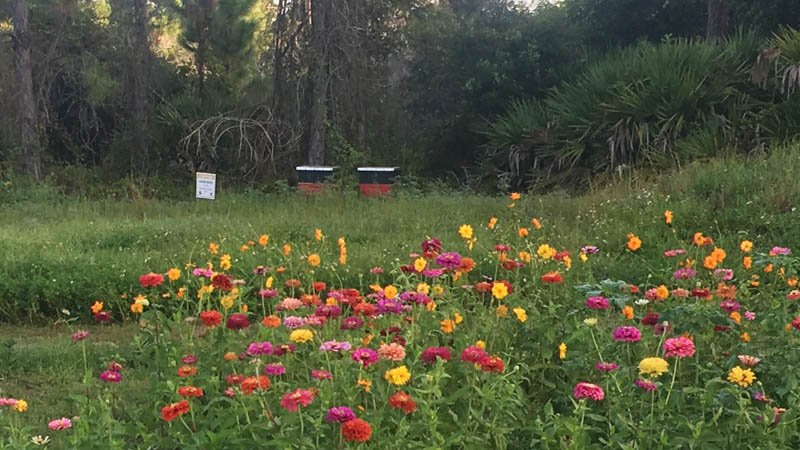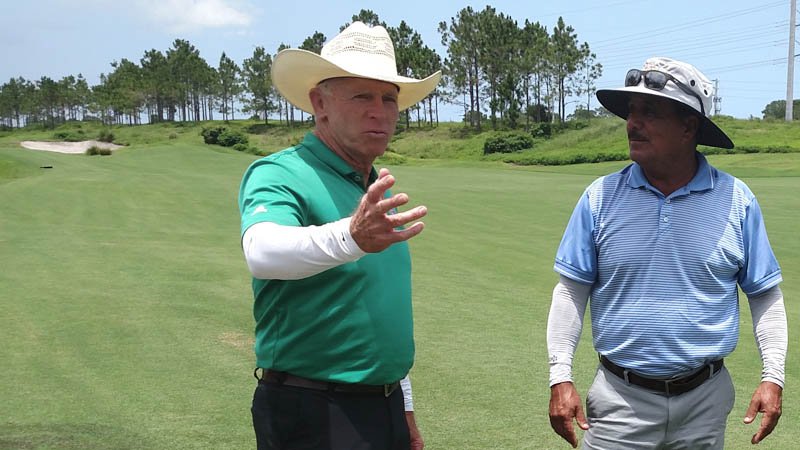
When it comes to lifelong learning, Dick Gray can get pretty philosophical in a down-home manner that mixes his Midwestern, Indiana upbringing and an Old Florida style that has defined him for the past 50 years.
"If you're done learning, you're done," Gray said flatly.
At age 75, Gray appear far from done when it comes to greenkeeping, learning, making the world a better place through golf and telling people about it.
This summer, he had a pair of beehives installed on the ninth hole of the Dye Course at the 36-hole PGA Golf Club in Port St. Lucie, Florida, where Gray has been director of agronomy for the past six years. There are plans to put in a third hive with wild bees caught on the golf course.
The project included planting a patch of wildflowers, courtesy of Syngenta, to help give the bees, which have a pollen-hunting range of about 2 miles, a headstart on their mission. The end result has been the ability to harvest a local source of honey, promote environmental stewardship and share the results with others.
(W)e are stewards of the environment, and Mother Nature, she is on a fixed income, and so we have to do something about that; we can't just squander what's in the cupboard.
"We are an Audubon Signature course, and you can't just get that plaque and go about your business. You have to keep adding to it, and that is a good thing," he said. "This is a learning process. I had to put my ego aside, and that is awfully hard to do. Learning is the most important thing we can do, and the other part of that responsibility is to pass it on. Not that I'm the guru or mentor on this. I'm just one of the guys out there. But, we are stewards of the environment, and Mother Nature, she is on a fixed income, and so we have to do something about that; we can't just squander what's in the cupboard."
Both hives are painted red to honor Gray's alma mater Wabash College in his native Indiana, and Texas Tech University, where he earned a master's degree in restaurant, hotel and institutional management.
The project started when Roger Welker, a former superintendent at Vero Beach Country Club now with Independent Turf Partners, approached Gray about installing his hives at PGA. Gray, who didn't know much on the topic, finally agreed, but only after he studied a similar project at Broken Sound Club in Boca Raton. Gray knew Easter from the latter's days as superintendent at Piper's Landing in Stuart.
"Not to follow the herd, but I was happy someone was out ahead of us on this," Gray said.
"Florida is a little different. A lot of golfers come here from their clubs up north, and they compare us to what they do up there. No matter what we do, it's questioned.
"What makes it so incredible is he did it in Boca, if it was someplace else, that's one thing, but Boca? How'd he do that? Those people are fussy, and when you introduce bees on a golf course, someone is going to get sued, and there will be an attorney for every bee."

The hives are part of a larger get-back-to-nature effort that Gray is putting into place across the 350-acre PGA campus that includes natural areas that have created habitat for birds and insects.
Both components of the program can help show others that bees, wildlife and golf courses can coexist, Gray said.
"I've studied pollinator decline for several years, and I've wondered ‘Am I part of that? Am I contributing to that?" he asked.
"We've taken about 35 acres, about 10 percent, that we used to mow every week and we now mow eight times a year. We've reduced our carbon footprint by mowing 90 percent of what we did weekly, and created habitat for birds. You can't believe the diversity of birds that now feed there, and that area helps define the golf course. It works in well with what we're trying to do, and the bees fit right into that. It's the cherry on the whole thing. If we can keep these pollinators healthy, that takes the check mark off the golf course as being part of the problem."
I thought I'd have three hives in this year. I know have 26. It will be close to 60 in a couple of months .... What started out as a hobby is now looking like a secondary business.
The honey off the golf course is now offered inside the club's grill under the name Dye's Reserve #9, and that has been a hit with golfers, especially women, Gray said.
Welker first installed a hive at Sailfish Point Golf Club near Stuart, where Gray once worked, because that club, too, wanted to show that golf courses and bees can coexist in harmony. When Gray learned about that, he contacted Welker to get some hives at PGA.
"He told me 'We should put those out here. The PGA needs to be doing that,' " Welker said.
Welker has since installed hives at The Floridian and Lost Lake as well as at the Miami Dolphins sod facility.
"I thought I'd have three hives in this year. I know have 26," Welker said. "It will be close to 60 in a couple of months because we split the hives every year. What started out as a hobby is now looking like a secondary business."
A new colony of bees were found at PGA swarming around their queen on a tree near the No. 10 tee of the Ryder Course. Welker collected them and is going to install a third hive.
"We have the prettiest patch of wildflowers you ever did see," he said.
"I'm not trying to landscape the whole place in flowers, don't get me wrong, but it works well with pollinators, and it's a movement that I like to be part of. We have mulie grass and burgundy grass and white fountain grass. The only thing we're missing is the aroma from the orange blossoms we used to get. We're here to help Mother Nature. This is a strong message, and it's one that has legs."

